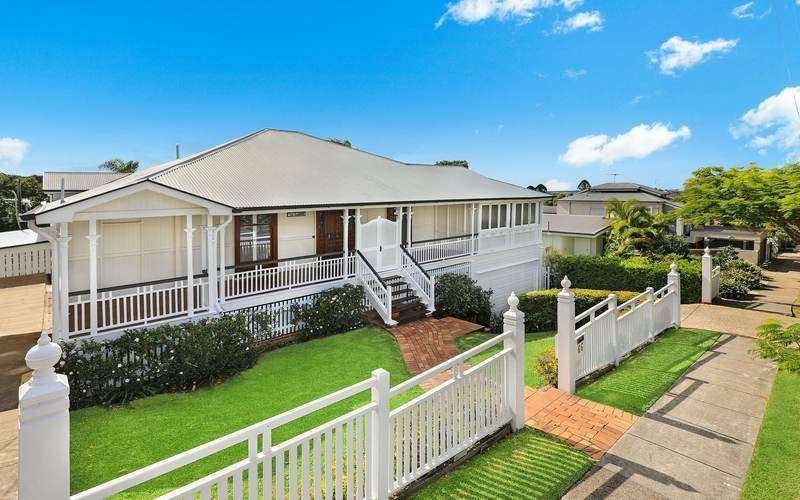Moving is stressful enough as it is without factoring in the logistics of buying a home and selling a home. This is particularly true true if you want to pull off both endeavours at the same time. Buying then selling and selling then buying can come with their own sets of complications. Buying and selling a home simultaneously can take these issues off the table; however, new ones can arise, so it’s important to know what you’re doing.
You will have a few options when looking to buy and sell concurrently: you can adjust your settlement, make your home subject to sale, release your deposit early, or even rent back your property for a period of time.
We asked two property experts for their advice on all of these options, including which may be better, and what happens if buying and selling simultaneously isn’t possible.
Reducing or extending your property’s settlement/s
Whether you buy or sell a home, the property will need to settle. Settlement dates could be a certain number of days - for example, ‘30 days from contract date’ or ‘60 days from contract date’ - or a specific date from the get-go. Either way, settlement dates are often shuffled around and changed, and it’s relatively easy to do so. Once you reach settlement day, and the buyer and seller’s solicitors finalise the sale - ownership is transferred to the buyer and the sale is complete. Settlement can be delayed if any conditions haven’t been met, or if the buyer needs a few extra days to settle their own property sale.
Scott Aggett, property negotiator at Hello Haus, says settlement dates are probably the most flexible item in a sale contract.
“[Settlement dates] are frequently changed to suit buyers or sellers and form an important part of any negotiation around price and terms,” Mr Aggett told Savings.com.au.
Ideally, in this situation, you would aim to have both properties settle on the same day by reducing or extending your settlement period. This way, you don’t need to look into other options like bridging finance or renting another property for a short window.
Making your home ‘subject to sale’
If you know you want to buy and sell around the same time, you could have a ‘subject to sale’ clause added to the contract for the property you’re purchasing. This essentially means that the sale is contingent on the sale of your current property going through. There are different variations of this clause depending on whether you already have a buyer or not. Having this clause included on the contract means that if the sale of your current home falls through for some reason, you have the option to pull out of the contract on your new home. It’s designed to protect you, the buyer, and can be waived in the event you want to continue with the purchase anyway.
You could also include a ‘subject to sale’ clause on the property you’re selling. In this variation, the sale relies on the purchase of your new property going through and, if it doesn’t, you can back out of the contract. However, the risk of having a ‘subject to sale’ clause is that you are entering a conditional contract. This is as opposed to an unconditional contract, which won’t include any special conditions such as a subject to finance clause, building and pest conditions, and so on.
“[A conditional contract is] often open ended time-wise and the deal could fall over as it relies on third party actions,” Mr Aggett said.
“It could tie either party up for an extended time period and, in a rising market, that could cost buyers thousands should the deal fall over and you need to start over again elsewhere.”
While you’re at it, you could also include contemporaneous settlement clauses on both contracts. This means that both properties will settle at the exact same time. Contemporaneous settlement can make the logistics of moving and sorting out your finances easier, but again, you will need to have a conditional contract on both properties for this to occur. In the highly-competitive real estate landscape right now, having conditions for the contract can make your offer less attractive to sellers.
Deposit release
Mr Aggett said another option that can be used to sweeten the deal is what’s known as a deposit release.
“A buyer may offer to give the seller access to the deposit early to assist with their onward plan, while sellers may request access to it for the same reasons,” Mr Aggett said.
“This is typically frowned upon by many conveyancers or solicitors as it can expose the buyers deposit to different set of external risks which would otherwise be mitigated.”
In this situation, you would need to include a ‘release of deposit’ clause on the contract/s which states that the seller can access the deposit paid by the purchaser once the contract has been signed but prior to settlement.
Having this extra cash handy can be helpful and, depending on how much it is, could even be used as the deposit on your new home. This could get you over the line in terms of financing both property transactions.
Temporarily rent back the property from the new owners
Mr Aggett said this is an option he used personally when selling his family home, as he rented back and lived in the property he sold for just over a year while he finished other business.
“We are building locally and wanted to lease the equity in our primary place of residence to use as funds for development,” he said.
“We listed our home for auction with a contract clause issued to all buyers stating [there would be] a rent back deal at an agreed weekly rental amount for a set period of 15 months; everyone offering to buy our home was agreeing to these terms.”
If you’re in the midst of purchasing another property, or you have plans set in stone for a future date, you could request a period to stay in the property you sold post-settlement.
“Some buyers may allow a seller to stay on for a short period two to 12 weeks for example at low or no cost to help them transition,” Mr Aggett said.
“This latter option is not without risk and is also frowned upon by solicitors or conveyancers acting for the buyer as the seller could be difficult to remove from the premises and become a cost burden to deal with later or worse still damage the property and have no security bond.”
What happens if none of these work for you?
If none of these methods of selling simultaneously work for you, you’re left with two main options: selling and then buying, or buying and then selling.
There can be a few issues that come up when buying then selling and selling then buying. If you choose to buy first, you’ll need to have the cash available to repay two mortgages and potentially have a vacant property/investment property on the cards. If you decide to keep the second home as an investment property, there are a number of considerations you’d need to look into - such as tax implications, finding tenants, property managers, landlord insurance and so on - which can complicate the matter.
Also read: Can you turn your home into an investment property?
On the flip side, if you sell first and then buy, you’ll need somewhere to live for a period of time. You might need to rent for a certain period of time, and then move again once the lease is up, which is a lot of effort. Not to mention, property prices could rise in the limbo period - as seen recently when house prices rose over 22% in 2021 - leaving you potentially priced out of the market.
Now you may be wondering: which option should you choose? Both come with their share of risks and rewards, but ultimately, which one makes the most sense?
Mr Aggett said that in a flat to rising property market - which is the case for most of the country - it’s better to secure your next property before selling your own home.
He had a few reasons for this, including:
-
A lack of listings may make it difficult to find what you want
-
A rushed negotiation due to external time pressure can weaken your position and lead to overpaying or making compromises on the type of home, location or the condition of the property
-
Should you sell first, you may think you have enough funds to purchase what you need next. However, strong market conditions may see prices run away from you and make it unaffordable
-
Without a secure onward plan, many sellers find themselves taking time out of the market to avoid the stress and rent instead. While this may defuse the pressure of buying fast, it prolongs the agony and sees you paying dead money to rent instead, so you’re effectively eating into your capital reserves
-
Selling second would see most sellers better educated about the current market conditions, giving you more confidence in the sale process having just been through the home buying journey yourself
Cate Bakos, President of Real Estate Buyers Agent' Association (REBAA), agreed that if the market is moving upwards, it makes sense to purchase sooner and sell later, but that the inverse applies for a declining market.
“General rules can’t exist in this situation. Deciding on the purchase/sale order actually depends on two factors: whether the market is moving upwards or downwards, and whether the buyer has the option to hold two properties for a finite period of time, (i.e. bridging finance),” Ms Bakos told Savings.com.au.
“For people that don’t have the latter, in a downwards market I’d never suggest buying first, and I’d be wanting assurance of a long settlement if the same buyer was trading in an upwards market.”
Ms Bakos said that in a positive market, the fear for many vendors is that they could sell in today’s market and purchase in an inflated market - that is, that house prices have increased to the point where they have lost money on their transaction.
“If they choose to buy in today’s market and then face a subsequent sale at a later date they could sell advantageously, but then they add pressure to the picture by putting themselves in a situation where they must meet a particular settlement date, or settle before their purchase settlement - which will mean that sourcing temporary accommodation becomes a new task,” she said.
Using bridging finance
Mr Aggett said bridging finance is an “often expensive and hard to find solution” for people that have purchased a property but don’t have the funds available to seal the deal.
“This is typically because they are yet to sell their own home,” Mr Aggett said.
“Some lenders will offer short term finance options to ensure the deal proceeds, however, it’s usually for a very short timeframe and at a high interest rate.”
A bridging loan is usually an interest-only home loan with a short loan term (typically six to 12 months) with the expectation that you will sell your existing home within this period. It’s designed to ‘bridge’ brief gaps in funding if you were unable to synchronise the buying and selling of your home.
“This can be an expensive process and should be avoided ideally,” Mr Aggett said.
Which option is better?
With all this in mind, you may be wondering: is it better to buy and sell at the same time; buy first then sell; or sell first and then buy? Very valid question; one that I cannot really answer.
Ultimately, it will come down to you which method of buying and selling works best. There’s no perfect way to go about it; there will likely be hiccups along the way whichever way you go. But either way you go, knowledge is power, so you really need to know what you’re getting yourself into.
Ms Bakos said it comes down to one thing: timing.
“It has become very difficult for buyers and sellers to identify where the point of a market shift will be. As they say, ‘nobody rings the bell when the market reaches the bottom’,” Ms Bakos said.
“The only way that we can identify when the market has turned for the better is once prices start to increase again. At that point, we can identify when the market actually bottomed out.”
Ms Bakos said no one can perfectly read when the market is going to turn - at either the high or low point - so her suggestion is to try not to time the market.
“I’ve seen too many people lose out in a moving market unfortunately,” Ms Bakos said.
“Our highs are typically longer than our lows, and anyone who decided to sit it out in early 2020 in the hope of nabbing a bargain will attest to this.”
She said that the best way to insulate from the possibility of a fluctuating market is to sell as concurrently as possible; to “trade in the same market”.
“This involves a lot of organisation and will require consideration of quite a few elements,” she said.
These elements include:
-
How to effectively market the property to ensure a prompt sale
-
What conservative estimates to rely on when calculating the cost of the ‘trade’
-
When to start shopping
-
How to introduce flexibility into settlement dates
-
Where (or who’s house) to stay if there is a gap between both the sale settlement and the purchase settlement
“Should you be buying and selling in the same market, you will have first hand experience dealing with selling agents that are then going to pitch for the listing off your own home,” Mr Aggett said.
“This is invaluable as you have experienced who calls you back, who services buyers, who misleads or under-quotes and so on to avoid the bad eggs and find the leading agent solution for your needs.”
Buying a home or looking to refinance? The table below features home loans with some of the lowest interest rates on the market for owner occupiers.
| Lender | Home Loan | Interest Rate | Comparison Rate* | Monthly Repayment | Repayment type | Rate Type | Offset | Redraw | Ongoing Fees | Upfront Fees | Max LVR | Lump Sum Repayment | Additional Repayments | Split Loan Option | Tags | Row Tags | Features | Link | Compare | Promoted Product | Disclosure |
|---|---|---|---|---|---|---|---|---|---|---|---|---|---|---|---|---|---|---|---|---|---|
5.79% p.a. | 5.83% p.a. | $2,931 | Principal & Interest | Variable | $0 | $530 | 90% |
| Promoted | Disclosure | |||||||||||
5.74% p.a. | 5.65% p.a. | $2,915 | Principal & Interest | Variable | $0 | $0 | 80% |
| Promoted | Disclosure | |||||||||||
5.84% p.a. | 6.08% p.a. | $2,947 | Principal & Interest | Variable | $250 | $250 | 60% |
| Promoted | Disclosure |
Image by Francesca Tosolini on Unsplash

Ready, Set, Buy!
Learn everything you need to know about buying property – from choosing the right property and home loan, to the purchasing process, tips to save money and more!
With bonus Q&A sheet and Crossword!






 Harrison Astbury
Harrison Astbury
 Harry O'Sullivan
Harry O'Sullivan













